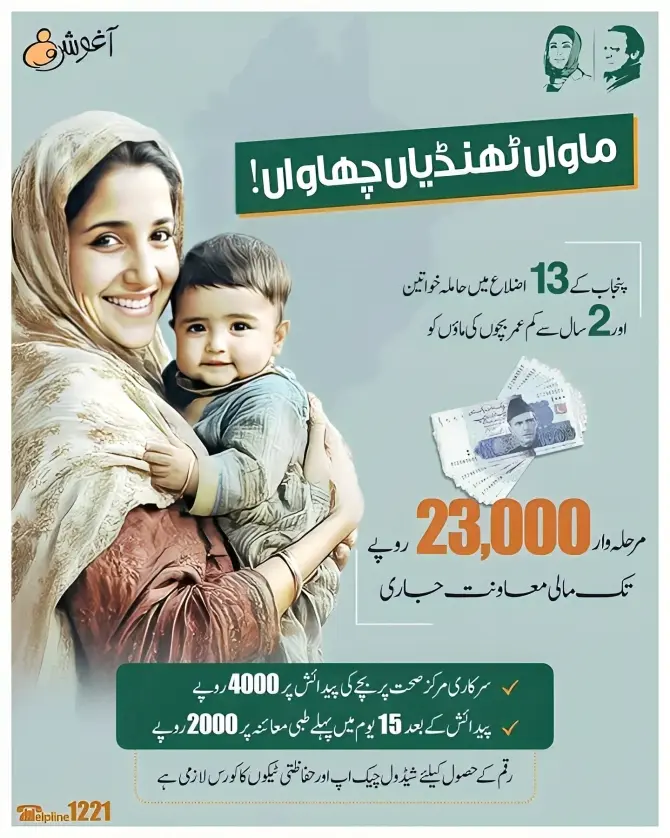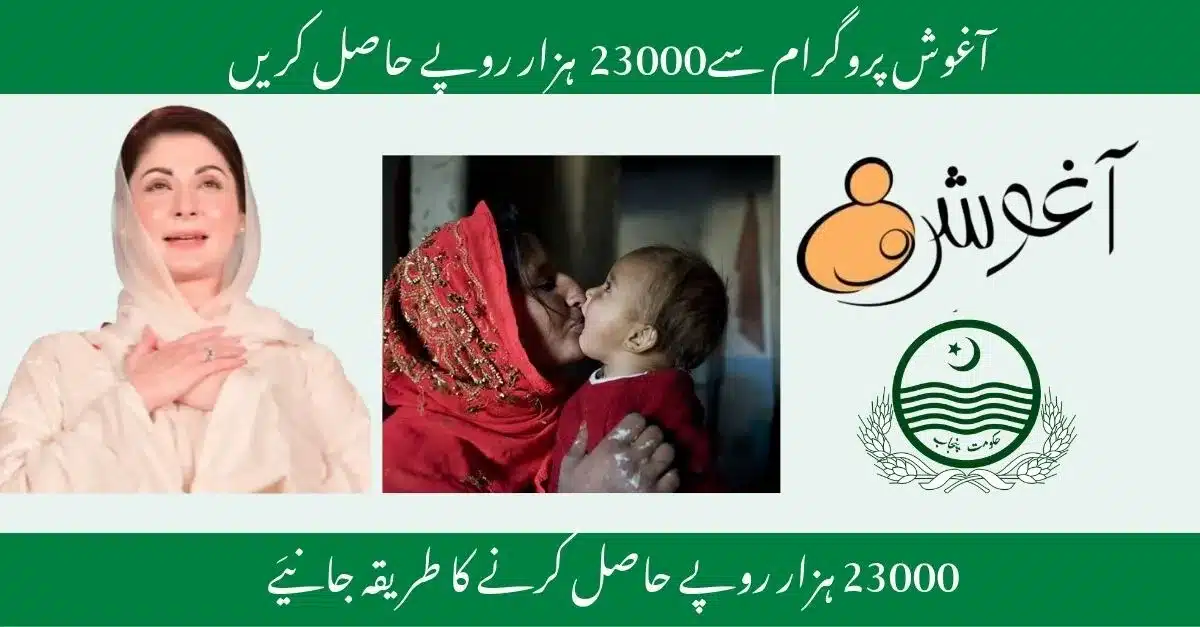The Punjab Aghosh Program is one of those government initiatives that, for some reason, people still don’t talk about enough. And yet, it’s a game-changer for maternal and child healthcare in Pakistan.
Imagine this—you’re a pregnant mother in a rural area. Accessing even the most basic health services feels like a puzzle with missing pieces. The Aaghosh Program is designed to put those pieces together, making sure mothers and newborns receive essential medical care, nutrition, and financial support when they need it the most.
But what exactly is this program? Who can benefit from it? And how do you register? Let’s break it all down.
💡 What is the Punjab Aaghosh Program?
The Punjab Aaghosh Program is a health and nutrition conditional cash transfer (H&N CCT) initiative, introduced under the Punjab Human Capital Investment Project. It’s not just about giving money—it’s about ensuring better maternal health, child nutrition, immunization, and hospital-based deliveries.
📌 Key Features:
- Provides up to Rs. 23,000 in conditional cash transfers (CCTs).
- Encourages safe childbirth in hospitals instead of risky home deliveries.
- Covers maternal checkups, child immunizations, and nutritional support.
- Targets low-income families across multiple districts of Punjab.
- Uses Electronic Medical Record (EMR) systems for digital tracking and transparency.
It’s basically a lifeline for families who might otherwise struggle to afford these critical healthcare services.
👩⚕️ Why Does Punjab Need a Program Like Aaghosh?
You don’t need to be a health expert to see the problems. Punjab has one of the highest maternal and infant mortality rates in the region. Lack of prenatal care, unsafe deliveries, and malnutrition are silent killers.
Let’s talk numbers:
| Indicator | Punjab Stats |
|---|---|
| Maternal Mortality Rate (MMR) | 186 deaths per 100,000 live births |
| Infant Mortality Rate (IMR) | 62 deaths per 1,000 live births |
| Children Under 5 Malnutrition Rate | 40% stunted growth due to poor nutrition |
| Hospital-Based Deliveries (Rural Areas) | Less than 50% |
These are not just statistics. These are real mothers, real children, real families. The Aaghosh Program aims to change these numbers—one family at a time.
📍 Which Districts Are Covered Under the Aaghosh Program?

This isn’t a province-wide scheme (yet). Right now, the Aaghosh Program focuses on high-priority districts where maternal and infant health indicators are particularly alarming.
If you live in any of these districts, you might be eligible:
✅ South Punjab Region:
- Bahawalpur
- Muzaffargarh
- Kot Addu
- Rahim Yar Khan
- Rajanpur
- Bahawalnagar
- Lodhran
✅ Western Punjab:
- Bhakkar
- Mianwali
- Layyah
- Khushab
✅ Dera Ghazi Khan Region:
- Dera Ghazi Khan
- Taunsa Sharif
If you’re not from these areas, don’t lose hope! The government might expand coverage in the future.
👩👦 Who is Eligible for the Punjab Aaghosh Program?
Not everyone can apply. There are specific eligibility criteria, and they make a lot of sense when you think about it.
✔ You qualify if you are:
✅ A pregnant woman or a lactating mother.
✅ A parent of a newborn child (0-1,000 days old).
✅ Registered with a government health facility.
✅ A resident of one of the covered districts.
✅ Holding a valid CNIC (Computerized National Identity Card).
❌ You are NOT eligible if:
❌ You already receive similar government health benefits.
❌ You are not registered at a Basic Health Unit (BHU) or Rural Health Center (RHC).
❌ You do not have a CNIC (registration is mandatory).
This system ensures that the right people—those who truly need help—receive financial and medical support.
📝 How to Register for the Punjab Aaghosh Program?
If you’re eligible, the registration process is surprisingly simple.
📌 Step-by-Step Registration Process:
1️⃣ Visit Your Nearest Health Facility
- Go to a Basic Health Unit (BHU) or Rural Health Center (RHC) in your district.
- Ensure your pregnancy or child’s birth is officially recorded.
2️⃣ Provide Required Documents
- Your CNIC (original + copy).
- Child’s Birth Registration Certificate (CRC) (if applicable).
3️⃣ Medical Checkups & Registration
- Pregnant women must undergo antenatal checkups.
- Mothers of newborns must register their child’s immunization schedule.
4️⃣ Receive Conditional Cash Transfers (CCTs)
- Once approved, financial assistance is directly transferred to your account.
No need to deal with agents, middlemen, or long bureaucratic delays.
💰 Punjab Aaghosh Program: Financial Support Breakdown
So, how much financial aid can you actually get? It’s not a one-time payment—it’s structured around health milestones.
| Condition | Cash Transfer Amount |
|---|---|
| Antenatal checkups (during pregnancy) | Rs. 3,000 |
| Hospital-based delivery | Rs. 7,000 |
| Child immunization (1st dose) | Rs. 2,000 |
| Child immunization (2nd dose) | Rs. 2,000 |
| Child immunization (3rd dose) | Rs. 2,000 |
| Final immunization milestone | Rs. 7,000 |
| Total Possible Amount | Rs. 23,000 |
Basically, the more medical milestones you complete, the more financial aid you receive.
🚀 How Aaghosh is Changing Lives: A Real-World Perspective
📢 “I never had money to visit a doctor during my pregnancies. I lost a baby once because of that. This program helped me afford hospital checkups. My youngest child was born safely because of Aaghosh.” – Ayesha Bibi, Muzaffargarh
There are thousands of stories like this, proving that small financial support can save lives.
⏳ The Future of the Punjab Aaghosh Program
This is just the beginning. With increasing awareness, better digital tracking (EMR app), and expanded district coverage, the program is set to reach more mothers and children in the coming years.
Want to check your eligibility or register today? Visit your nearest BHU, RHC, or official health department website. Don’t wait until it’s too late.
🚀 Share this information with someone who might need it! Saving lives starts with awareness.



We poor family